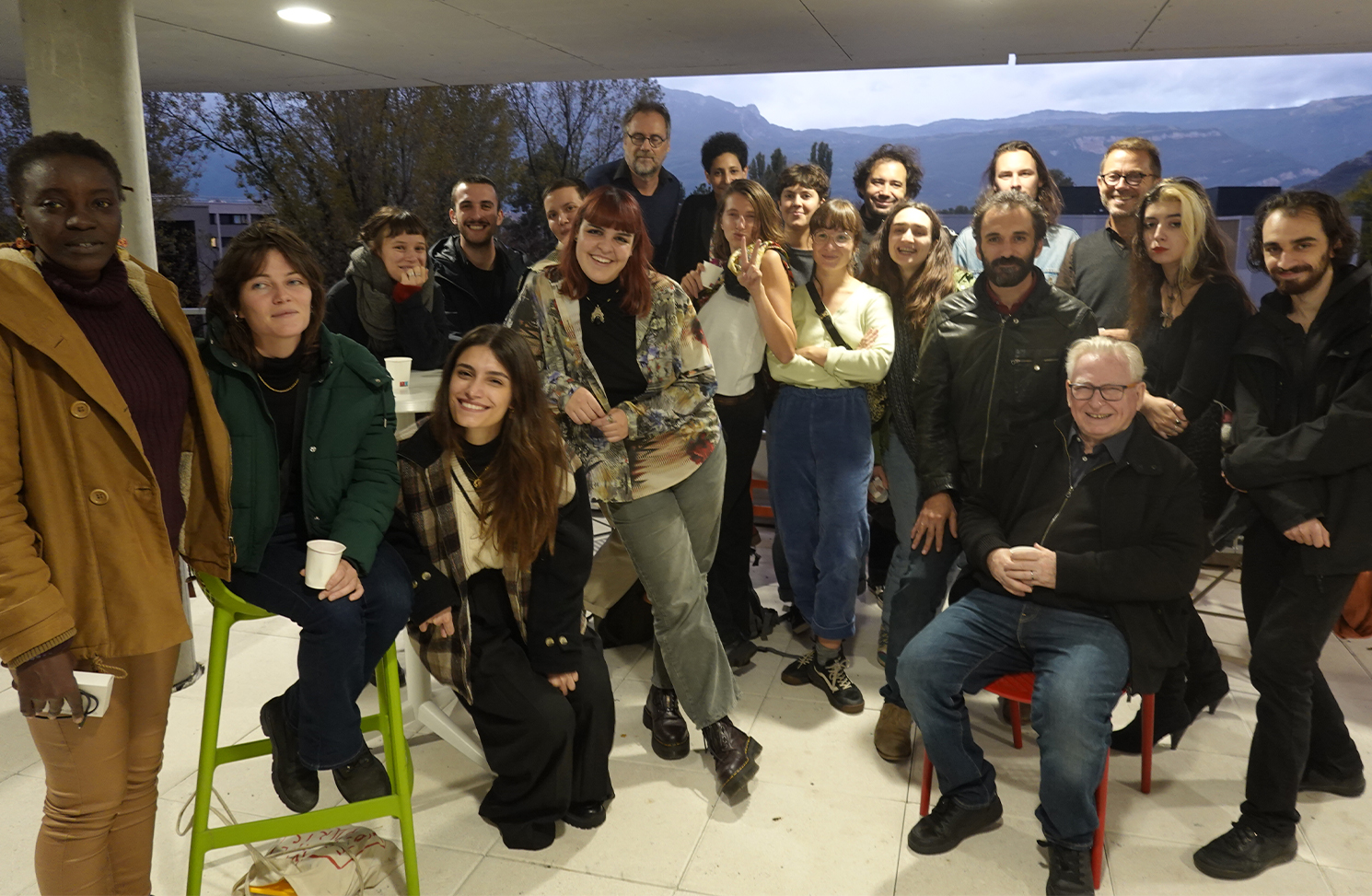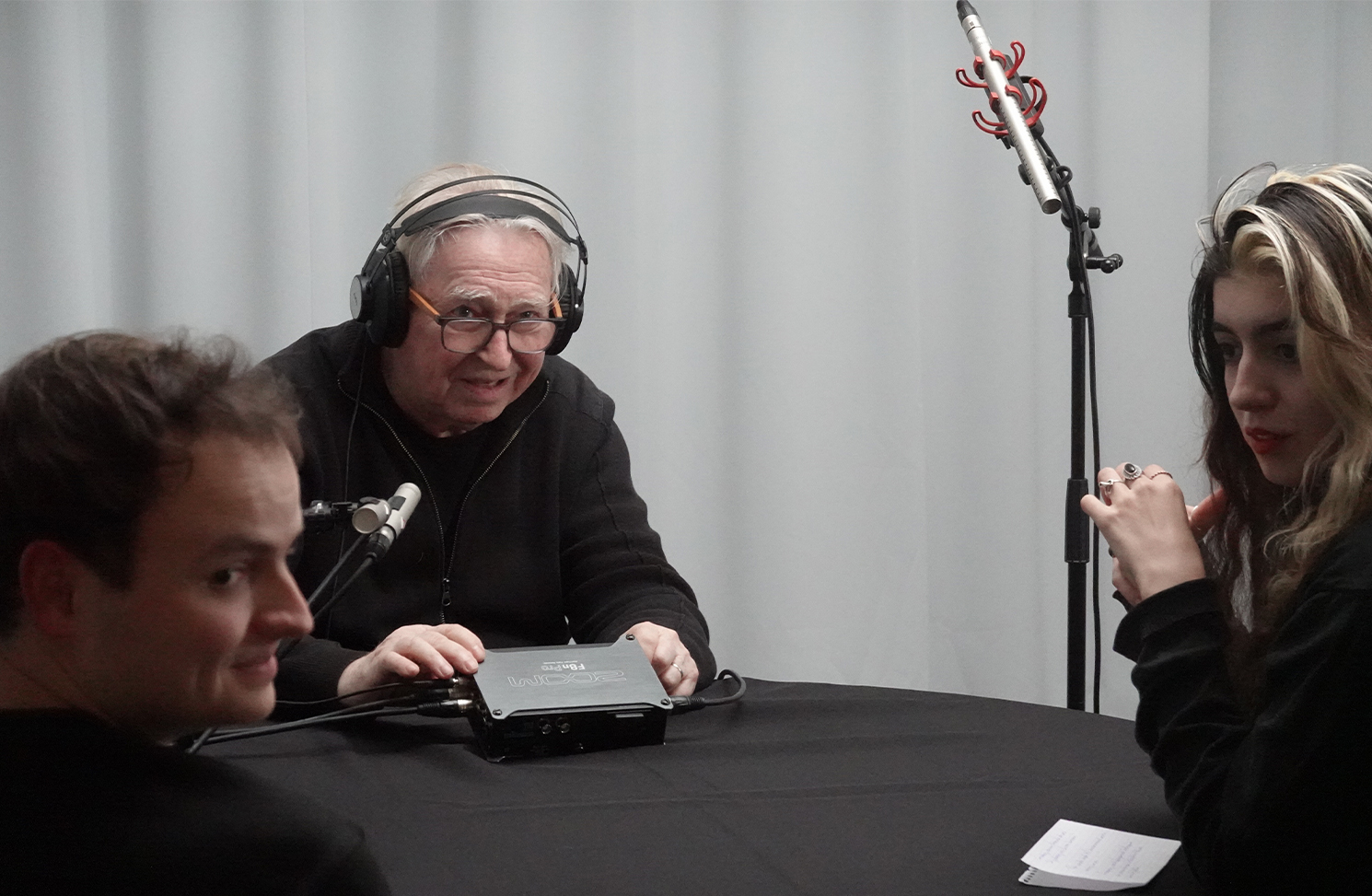Residency week with students in the Master 2 artistic creation program
We heard nothing! That's the conclusion you can draw when you leave a screening. If the images
the sounds have already faded away. What remains is perhaps a jingle, but little more...
Yet our bodies have been shaken. But by what?
The widespread oblivion of sound raises questions. How do we bring sound into our consciousness? Sound disappears beneath the image in the fusion of action. Could the synchronism that links sound and image be the primary reason for its disappearance? Understanding how we listen to reality can help us to grasp its construction models. To catch a glimpse of what we no longer even see in everyday practice, we need to dismantle ordinary protocols and deconstruct the habitus of realization. Before thinking about reconstruction, we need to lose the excess offered by direct sound recording, develop methods for evacuating this excess, and organize the systems to reveal what we want to designate. This led to the idea of developing specific methods for
how to organize each film's surges, cuts and ellipses. How can we combine and associate these motors that so discreetly organize filmic energy? How do these necessities take charge of what is least visible in the film, but is the most effective tool for organizing vision?
What remains to be seen, then, is how certain filmmakers achieve this - in particular moments of their work, rather than in their entirety - thus placing their film in the relative of sound. When the singularity stands out, it is not directly legible, barely graspable, but emerges through sensation. Sound isn't spectacular, it's sensational: it's the film that stands out in its entirety, sound always working discreetly for the sole benefit of the film itself.
Films "created by sound" are rare. Quality can't be achieved simply by deviating from sound, but by working from the very beginning of the film's conception.
In cinema, everything is experienced globally, and it is the synchronism uniting images and sounds that, through its formidable fusional power, keeps us from becoming aware of the separate existence of the two components of cinema: images and sound.
Studying sound, that hidden face, means first of all understanding the reasons for its disappearance. But we're not so deaf; why is this object so little considered by audiences, critics and even the filmmakers themselves? Because when it comes to the use of sound, it's not the same for every filmmaker, and while some are more concerned with it than others, there is no common vocabulary. The sound of Tati is not the sound of Godard, the sound of Tarkovsky is not the sound of Robbe-Grillet. It's because each of us has to create it specifically, invent it, tinker with it. Every film calls for its own sound invention, but paradoxically, in a filmmaker's entire body of work, only one or two films may have been conceived from the point of view of sound. And if, since 1929, all films
sont sonores, tous ne nous livrent pas les mêmes richesses.
If it's sound quality that's at stake, quality doesn't mean technical quality or technological complexity. It's a question of intelligent construction, of writing sound. Older films built using basic technologies offer no less richness than the sound achievements of recent films.
Whose job is it to produce a film's sound? The long chain of technicians who follow one another, or the director?
How are the soundtracks arranged in relation to the images? We need to go back to the fundamentals of listening, for it is in these fundamentals that the rules of perception are hidden. And if making sound means giving it to be heard, it's through specifically measured designation that the spectator's listening journey can be more deeply accomplished. How can we designate with the chaotic abundance brought back by the microphone - the same abundance we all experience when listening to images captured on our small camcorders? This is where the imperative need to dismantle sound reality becomes apparent, before meticulous reconstruction can take place. In this place, where the power of sounds rubs shoulders with the almost nothing, and above all in this almost nothing that we receive, that we feel within us like a tactile perception, stands, secretly, the place of sharing the sensible.
What I want to hear in the recording, in the detail of the actions offered by the sound realization, is the quality of the desire for exchange at play. The slightest detail of movement produced by hesitation or, on the contrary, by certainty, feeds the entire quality of meaning. Whether it's the movement of a voice, an object or an instrument, or the movement of the microphone that picks it up. It is this extremely minute data that is at the heart of the listening experience. For what matters in listening is not what is definite, but what is uncertain. It is the degree of uncertainty that is listened to. Our listening grows in proportion to its incompleteness. What is offered too much only engages a brief interest. The desire to listen is born of astonishment. Astonishment is born of rupture, and depends on the conditions of existence of discontinuities. It is the discontinuity of flows that engages our attention. It is the rupture that activates our need to understand what has just arisen. This is one of the motors that reactivates the listener's listening. Listening to a wide range of film extracts will reveal the diversity of approaches. Sound, the secret agent, is the converter of images. The projection will quickly make us realize that the entire film benefits from the work done on sound.

A residence to hear the cinema
Listening to a wide range of film extracts will reveal the diversity of approaches.
Sound, the secret agent, is the converter of images. The screening will quickly make us realize that the entire film benefits from the work done on sound.
A residency to hear cinema
It was the invention of synchronism that enabled the arrival of talking pictures.
From then on, a new mode of filmic construction emerged, becoming the dominant procedure in cinema.
What if we were to reverse the protocols of filmmaking: start with sound and emancipate ourselves from synchronism?
What would be the nature of film?
This is what your practices will help us discover.
Daniel Deshays
Daniel Deshays
For twenty-five years, he was a sound designer for the performing arts (theater and dance) and for major national events. He has produced over two hundred and fifty records, and recorded live post-production and/or music for over a hundred films. A research director and university professor, he designed and taught for ten years at the École des Beaux-Arts de Paris and for twenty-five years at the École nationale du théâtre (ENSATT). He currently teaches at the Fémis, Geneva's Head, Cuba's EICTV and Les Ateliers Varan.



